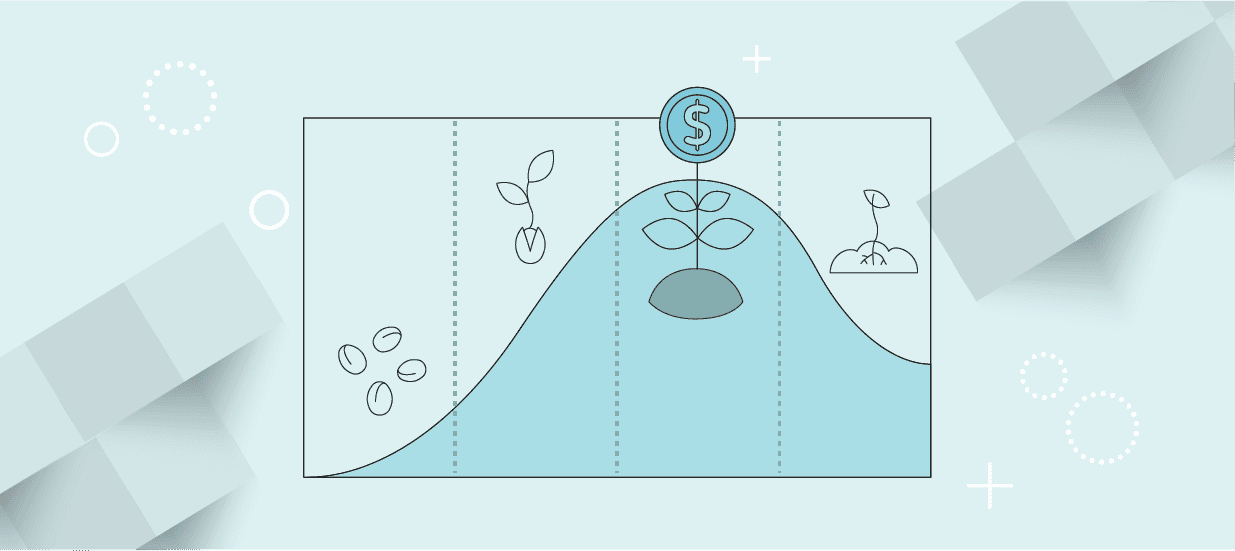Humans are wired for stories; we’re storytelling animals. So the recent resurgence in storytelling, the original social medium, has been a welcome evolution. It’s also an important one because stories:
- Cut through clutter created by the online content explosion
- Are remembered up to 22 times more than facts alone, according to Stanford University research
- Scale faster than facts alone, creating a multiplier effect that is critical for marketing
In short: If you aren’t telling stories in your content, you should be.
From Product-Centered to Story-Driven Content
The way customers are buying—particularly in B2B—has changed. According to Forrester Research (October 2012), B2B customers, on average, are more than two-thirds along in their buying journey before reaching out to a vendor. Customers are doing their own research and they’re asking the most important question: How will your product or service

make my life better?
As a result, stories of customer success and real change matter more than ever to demonstrate the answer to that question. And if your marketing fails to elevate the discussion to one about how lives are improved, you’ll never rise above the noise.
To become a storytelling organization, elevate your product or service discussions to focus on the human needs of your audience. Tell stories about real people who use your product or service; don’t focus on the product itself. Your goal is to tell a story that makes your customer the hero.
Seven Steps for Storytelling Success
One of my favorite models for storytelling comes from improvisation’s real-time way of cocreating stories. I’ve used this model as both an improviser onstage and as a marketer. Recently, I used it in several sessions about storytelling that I led at ProductCamp Silicon Valley 2013.
What I love about this particular model, the “seven-step story” (that I have modified for this article), is that it is easy to adapt. It walks people through all the key elements of a story: the hero, the conflict, the climax, the resolution and the change. This model works for just about every type of story a company can have and is told through the lens of your customer. I have adapted the original seven-step model specifically for product storytelling with my own story sensibility and “human lens.” The following version is my proprietary model:
Once upon a time, <hero> was doing … And every day, he or she faced <big conflict> … Until one day, he or she discovered <the solution: your product or service> … And because of that, he or she could <benefit 1>. And because of that, he or she could <benefit 2>. And because of that, he or she could <benefit 3>. And every day since that day, he or she uses <your product or service>, because it enables him or her to <big human need>.
Note: You don’t need three benefits, but three is the maximum you want. Shorter stories are more powerful.
Here’s a brief example, applying the model to a cloud-based storage product:
Once upon a time, Bob, a company owner, kept numerous files in a number of locations.
And every day, he updated information in many places, because he did not have the data he needed in one secure place that he could access from anywhere. It was a huge pain, taking time and resources.
Then one day, a friend introduced Bob to Company X’s cloud-based data services.
Because of that, Bob could securely access data anywhere and anytime.
Because of that, he was able to get more work done quickly and easily and without worrying about compromising data security.
And every day since that day, Bob’s organization uses Company X because the ability to securely access data “anytime, anywhere” has reduced his risk, ensured data freedom and freed up his time to do what he does best: run his business and spend time with his family—not with his IT department.
The cloud is simply how Company X delivers its services. What matters most in the scenario is that the product allows Bob to do something (bigger than the product) that he could not do before. In this case, Company X enables simplicity, data accessibility and security—and frees up more of his time to do what he wants to do.
People Buy Change, Not Products
Users don’t buy value propositions; they buy something bigger that helps them in their lives.
What can your customer do now because of your product that he/she could not do before? In telling the story, your product or service must make your customer look good. They are the hero, and the most important part of the story is showing how the hero changes. Your offering is the supporting sidekick, and you must think beyond it, because when you make marketing about features, you miss the opportunity to connect with people at a visceral level.
Focus on what people really want, and don’t stop at superficial answers, like convenience or saving money. Those can be valid value propositions, but what people really buy is hope of improvement. Stories have capital precisely because they show customers how their lives will be different. A great story helps prospects and customers envision “what could be” because of your offerings. Hope matters.
Ask your customers, “How did we make your life better?” And then make the stories personal and credible. The best stories are built on truth.
Elevate your marketing. Products come and go, but a deep commitment to changing customers’ lives for the better—something bigger than any company—is a purpose that provides meaning. That’s the change your stories must focus on if they are to resonate emotionally with your audience, be memorable and create compelling calls to action.
That’s my story. What’s yours?
Author
-
Kathy Klotz-Guest is an improviser, storyteller and marketer, who is CEO of San Jose, Calif.-based marketing and communications firm, Keeping it Human. She also is a founding senior fellow and marketing director for the Society for New Communications Research (SNCR.org) and plays for ComedySportz on Sundays. She has master?s degrees from Stanford University and University of California, Berkeley. She speaks on marketing topics all over the country, blogs (CustomerThink.com, Socialmediatoday.com) and runs a marketing podcast. She can be reached at [email protected].
View all posts








